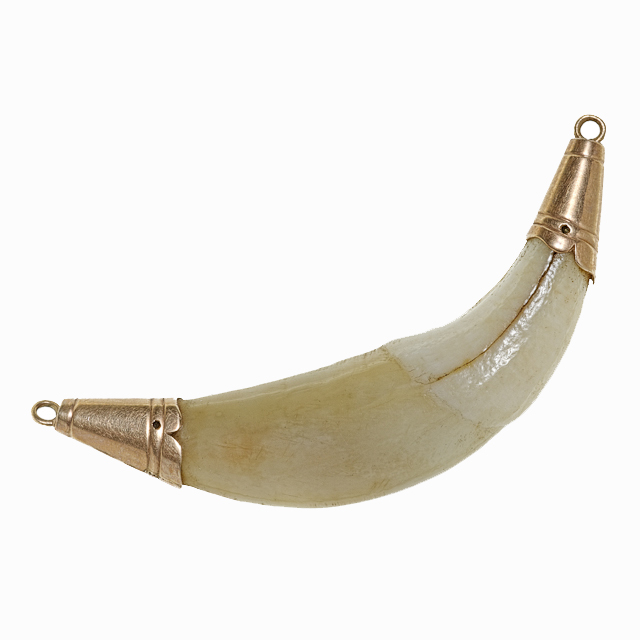Wolf Tooth, France

Transferred from the Wellcome Institute in 1985; 1985.52.105
This wolf’s canine, mounted in gold, was worn by a child as a remedy for convulsions. Convulsions can be caused by a high temperature, and may occur when a child is teething. The wolf’s tooth would have been hung around the child’s neck so he or she could chew on it and rub their gums with it, in much the same way that plastic teething toys are used today.
Wolves’ teeth have been used as charms and remedies against evil and disease since the Stone Age, and have been found in prehistoric graves. The practice of using a wolf’s tooth as a remedy for teething was recorded by the Roman author Pliny the Elder in his famous encyclopedia The Natural History of Pliny. According to Pliny, a wolf’s tooth could also prevent a child from being startled.
This tooth was acquired sometime before 1931, and is from the Haute-Marne region in northeastern France. Wolf hunting was popular in 19th century France, with a single animal fetching a month’s pay. Hundreds of wolves were killed each year, and by the end of the century the wolf population had been hunted almost to extinction. Today, wolves are an endangered species in France, and killing them is illegal.






